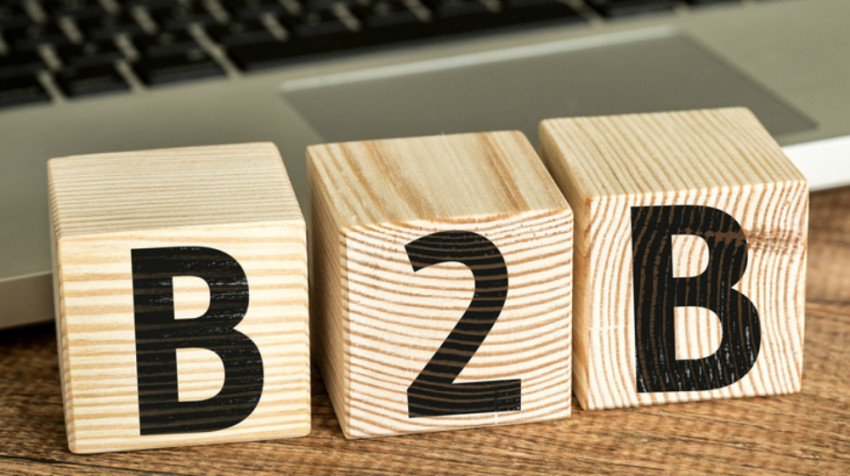Automated Accounts Receivable Programs: Cutting DSO by 30% in Six Months
In today’s economy, speed to cash is as important as speed to market. Companies that let receivables linger for 60, 75, or even 90 days are putting...

CFOs and Controllers the world over are pressed with making difficult decisions for their businesses. While obviously leading the charge over day-to-day financial activities within their organization, it’s more of a necessity to be a valuable contributor to the organization itself, and as such, these fiscal leaders are consistently looked to as a means to create a vision and set direction in the mid and long term in an effort to create maximum business value. These activities can translate from the daily operational load of accounting teams to treasury and risk management strategies to tax and audit duties in many other areas. One that is continuously evolving and where we’d like to focus our attention today is the area of B2B payments.
So much is changing so fast in today’s digital economy that it can be difficult to keep pace with emerging technology. No sooner does technology get invented and deployed than newer, alternative tech is out there making waves. It can be very daunting to be a finance leader whose decision-making can have far-reaching consequences within the business itself immediately and with long-term implications. With that said, we want to focus today on how B2B payments can be harnessed as a value-creation mechanism. The old days of thinking that a payment is a payment and therefore really only a liability to a business are over. Savvy finance professionals recognize the two-edged nature of payments, which we’ll get into in a moment.
It is accurate that a payment is a liability on the balance sheet, but if that is the only understanding of payments, it’s woefully outdated. Because payments are often perceived in this fashion they get little fanfare in terms of executive attention, yet they represent one of the most worthy areas of opportunity within the financial back office. For starters, simply converting existing B2B payment methods from old school approaches like traditional check cutting to more modern wire or ACH transactions yields the immediate benefit of cost slashing. According to The Accounts Payable Network, the average cost to process a check is $5.14. Therefore, using that as a multiple, a company that is cutting 1,000 of those a month is spending $5,140 just to get their payments in the mail, which is not even factoring in the cost to process the invoice that had to be matched or approved to get it ready to be paid! Switching to a method like ACH can drop that cost by upwards of 80%. So, if you’ve yet to even consider the ramifications of that in your business, you owe it to yourself and your company to dig a little deeper and discover what’s possible. As far as edges are concerned this is really dealing with the cost edge associated with payments, but on the flip side, you have the profit edge, which seems oxymoronic in some ways but is nonetheless true.
For really forward-thinking Finance leaders, you can go way beyond cost-cutting and move your payables process forward to be a profit generator for your business. This can be done via updated payment methodology such as in virtual card payments. Using these single-use virtual credit card transactions, which are highly secure, you can pay one or many invoices to a vendor and cash in on the available rebate stream afforded through transaction interchange. That being said, many more suppliers are willing to accept the merchant fees associated with card transactions as a means to provide their customers with greater payment flexibility and in an effort to bring cash into their businesses faster. The upshot of this is that you can literally tap into a newfound profit stream in your back office, which is unheard of in most traditional Accounts Payable processes. As an example, if your average payable is $1,000 and you’re receiving a 1% cash rebate for paying via virtual card, then you’re business is intaking $10 for that transaction instead of paying via check (which are highly susceptible to fraud scenarios) and costing your business $5+. This is a net swing of $15 per transaction successfully converted to virtual payment methods (and a tidy return if we might add). Now it would be foolhardy to think you could convert 100% of your paid traffic to this method, but a conservative estimate of 25% of it is well within reach which can mean a solid contribution financially to the health of your business. Also, many businesses have average invoice amounts much higher than $1,000 per transaction so the gains are scalable relative to your actual spend.
Either way, the monetization of your B2B payments can be the beginning of value creation within your financial back-office processes. Many other efforts to automate or otherwise improve areas like Accounts Payable invoice processing fall flat on their face due to high capital investment costs or other resource constraints. To our thinking pursuing an ePayments strategy within the confines of your existing B2B payments stream is the ideal way to generate a win for the business from momentum and a cashflow standpoint. This type of win can and should get you on the path to winning at AP, which we discuss more over here!
Schedule a no-commitment demo with us to explore how document automation can accelerate your accounts payable processes.

In today’s economy, speed to cash is as important as speed to market. Companies that let receivables linger for 60, 75, or even 90 days are putting...

Managing operational costs today often means balancing operational costs against tight margins, making it essential to join a group purchasing...